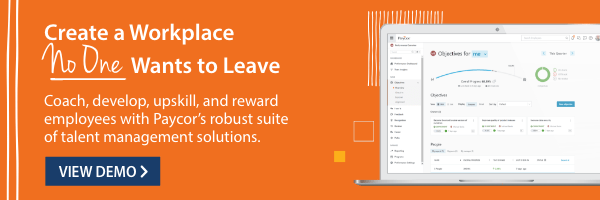We’ve all been there: one day you’re sharing inside jokes by the water cooler, and the next, that coworker is posting a cryptic “new beginnings” status on Facebook. If Bob from Accounting, once the life of every meeting, now seems more interested in his shoelaces than spreadsheets, you might have a red flag.
Talent retention isn’t just a buzzword—it’s a survival skill in the dynamic world of HR. In the ever-evolving landscape of talent management, it’s paramount for HR, people managers, and business leaders to develop an intuitive understanding of potential exit signs. Addressing these concerns early can mean the difference between retaining invaluable talent and watching them slip away to the competition. This article offers insights into common behavioral, emotional, and professional changes that might hint at warning signs of an unhappy employee and offers actionable strategies for maintaining a robust workforce.
8 Clues an Employee Is about to Say, “See Ya!”
1. Behavioral Changes: Subtle Signals Can Speak Volumes
An early and often subtle indicator of underlying dissatisfaction in an employee is a shift in their behavior. This can range from a once-passionate employee displaying a noticeable lack of interest to them participating less in team meetings or seeming distant during discussions.
Another manifestation of this dissatisfaction could be in the form of regular tardiness or frequent sick days without clear reasons. Signs of quiet quitting in an employee’s work habits, such as missing deadlines or making frequent errors, should also be taken into account. Such shifts are essential to monitor, as they provide valuable insights into an employee’s mindset and potential intentions.

Learn what drives turnover, the metrics you need to track, and how to build a turnover-resistant culture in our free guide.
2. Performance Changes: Engagement and Output Levels as Indicators
A decline in an employee’s engagement can serve as a precursor to a signs an employee is leaving. Some common manifestations are a decrease in the quality of their work, or the once impeccable employee producing subpar results. You might also see a diminished sense of initiative, as evidenced by decreased voluntary contribution or taking on of additional tasks. Lapses in communication, whether through reduced response rates or a lesser degree of enthusiasm in professional discussions, can indicate a broader issue of disengagement.
3. Communication Patterns: Reading Between the Lines
The nature and frequency of an employee’s communication can serve as a mirror to their engagement levels. For instance, decreased participation in meetings or team discussions can be indicative of broader engagement issues. On the other hand, increased negative comments or criticisms about workload or organizational direction could hint at more profound underlying issues. When employees reduce their collaborative efforts or start avoiding team interactions, it can be seen as a growing detachment from the company’s culture.
4. Emotional Indicators: More Than Just a Mood Swing
Emotions significantly influence an individual’s professional journey. For instance, a noticeable shift from a normally cheerful disposition to a continually downcast or visibly annoyed demeanor can hint at an underlying issue. Another emotional sign to be wary of is when an employee exhibits symptoms of chronic stress or visible signs of burnout. These manifestations, such as exhaustion or fatigue, might suggest that their current role’s pressures are becoming overwhelming and they’re looking for an exit.
5. Relationship Dynamics: Navigating Interpersonal Shifts
The quality and nature of workplace relationships greatly influence job satisfaction. If an employee starts to distance themselves from colleagues or show reduced interest in group activities, it can signal a growing disconnect from the company’s culture. Similarly, a noticeable decline in teamwork or collaboration, especially when previously active, might hint at broader engagement or alignment issues within the team.
6. Career Advancement: Stagnation and Disengagement
An employee’s perceived professional growth trajectory within the company can significantly influence their retention. An obvious sign of this indicator is when career development discussions are consistently avoided or evaded. This could be indicative of a perceived lack of growth opportunities or a belief that their contributions aren’t valued. Additionally, a noticeable reluctance to take on new challenges or step outside their comfort zone can signal a deeper issue of stagnation and disengagement.
7. Appearance Indicators: The External Clues
While it may seem superficial, significant changes in an employee’s appearance can sometimes signal underlying issues. A sudden shift to a more casual mode of dressing or an apparent lack of attention to grooming can be indicative of a decline in job commitment or pride in their role. If employees who were once vibrant and energetic begin to appear perpetually fatigued or worn out, it may point to deeper underlying problems.
8. Personal Concerns: Balancing Professional and Personal Lives
Personal issues outside the realm of work can significantly influence an employee’s professional engagement. Major life changes, such as family crises or other significant personal events, can have a detrimental effect on job performance and dedication levels. Another area of concern is when there’s a noticeable imbalance between work and personal life, as evidenced by overextended work hours or an inability to detach from work commitments.
How to Put That Resignation in Reverse
It’s vital to approach employee behavioral changes with sensitivity. While these 8 signs aren’t definitive proof of departure intentions, they should prompt proactive engagement from leadership. Open communication is key when addressing shifts in behavior or work habits. Taking the time to sit down with the concerned employee, discussing their current feelings towards their role, and actively listening to their feedback is essential. Using employee surveys to gauge overall sentiment can be helpful as well. By fostering a culture of openness, transparency, and encouraging discussions, you create an environment where employees feel valued and heard.
To combat disengagement, consider implementing team-building exercises that promote an inclusive work culture and emphasize mutual respect. Additionally, consistently communicating growth opportunities and ensuring employees see a clear path to career progression within the organization is important. Regular one-on-one meetings and creating a culture where employees genuinely feel heard can have a significant impact. Advocating for work-life balance, implementing wellness programs, and providing stress-relief initiatives are also crucial in supporting employee well-being.
Recognizing the early signs of potential employee departure and addressing them effectively is crucial in today’s complex domain of talent management. By fostering regular communication, a supportive environment, and providing clear paths for growth, businesses can ensure that their valuable talent remains engaged and committed. The essence of talent management isn’t just in spotting the signs but in taking proactive steps to strengthen the ties that bind your team together.
How Paycor Helps
Discover how Paycor’s COR Leadership Framework can help you recognize and address signs an employee is about to quit. Paycor Analytics also help you answer the right questions about your workforce with actionable data. Predictive analytics to identify the probability and extent of employee turnover in the next 12 months can be instantly shared via email with others in your organization. Strengthen your team retention strategies today with Paycor.










